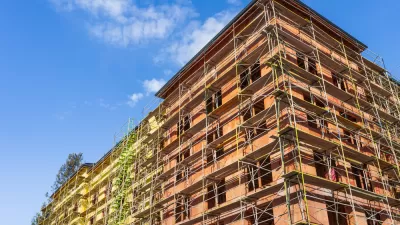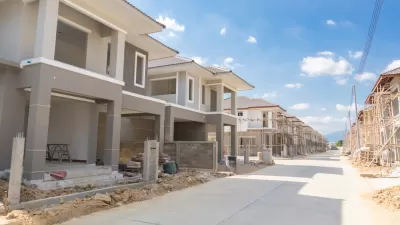Jim Russell is again taking to the pulpit to dissent from the popular view that supply problems are causing housing affordability crises in cities like New York and San Francisco.
Russell has written two recent articles that examine the question of whether the rents are "too damn high" due to limited supply or strong demand.
The first article parlays a Tennessee Williams quote, "America has only three cities: New York, San Francisco, and New Orleans. Everywhere else is Cleveland," into a dissenting take on recent claims made by Ed Glaeser that historical trends of highly regulated cities have made high real estate prices a sign of limited supply. Here's what Russell says about that: "Glaeser is wrong. Sure, constraints on housing supply push up rents and home values. But the dominant story for the market in global cities such as San Francisco and New York is the quality of demand. Choke the unique demand and the drag on supply ceases to matter."
The second article states that "Supply only matters where demand is strong." Another strong statement that will surely surprise ardent supporters of development: "The squawking about greater density and housing supply allows more white people to follow other white people into the city, thereby exacerbating racial segregation. YIMBYism comes across as a sinister form of urban colonization. Build us housing where we want to live."
While the debate persists, so do the effects of the much-discussed issues: expensive parts of the country are deeply embedding in structures of inequality, and sprawl continues, unabashed by the recent recession.
FULL STORY: Fleeing New York and San Francisco for ‘Cleveland’

Planetizen Federal Action Tracker
A weekly monitor of how Trump’s orders and actions are impacting planners and planning in America.

Chicago’s Ghost Rails
Just beneath the surface of the modern city lie the remnants of its expansive early 20th-century streetcar system.

San Antonio and Austin are Fusing Into one Massive Megaregion
The region spanning the two central Texas cities is growing fast, posing challenges for local infrastructure and water supplies.

Since Zion's Shuttles Went Electric “The Smog is Gone”
Visitors to Zion National Park can enjoy the canyon via the nation’s first fully electric park shuttle system.

Trump Distributing DOT Safety Funds at 1/10 Rate of Biden
Funds for Safe Streets and other transportation safety and equity programs are being held up by administrative reviews and conflicts with the Trump administration’s priorities.

German Cities Subsidize Taxis for Women Amid Wave of Violence
Free or low-cost taxi rides can help women navigate cities more safely, but critics say the programs don't address the root causes of violence against women.
Urban Design for Planners 1: Software Tools
This six-course series explores essential urban design concepts using open source software and equips planners with the tools they need to participate fully in the urban design process.
Planning for Universal Design
Learn the tools for implementing Universal Design in planning regulations.
planning NEXT
Appalachian Highlands Housing Partners
Mpact (founded as Rail~Volution)
City of Camden Redevelopment Agency
City of Astoria
City of Portland
City of Laramie





























